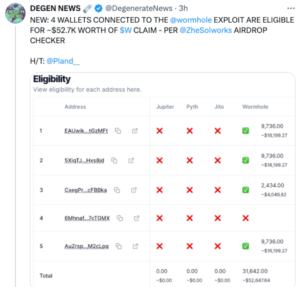Ethena platform is set to utilize a cash-and-carry trade strategy to short Bitcoin futures, thereby generating yield on its USDe tokens through funding rates.

Since its inception in January, Ethena has been generating yields by shorting Ether (ETH) futures and collecting funding rates. Ethena’s USDe is designed to maintain a $1 peg at all times. Since its launch, over $2 billion in USDe has been issued, with demand continuing to rise.
Ethena Labs will begin buying and shorting Bitcoin (BTC) as part of a cash-and-carry trade. This move, according to developers, will create a “safer” USDe synthetic dollar product for users. Despite being controversial, the platform is currently generating an annual yield of 37% (a seven-day rolling average that can change) by shorting Ether (ETH) futures and pocketing funding rates.
Funding rates are periodic payments made to traders, either long or short, based on the difference between perpetual contract markets and spot prices. While this strategy has attracted critics, demand for USDe, its synthetic dollar, has continued to grow — with over $2 billion issued since its release. USDe is designed to maintain a $1 peg at all times, similar to a stablecoin but with a different backing mechanism.
Developers believe that adding Bitcoin to the mix will enhance user yields and further increase USDe issuance. As Ethena developers stated in an X post, “After the unprecedented growth of USDe since launch, Ethena hedges represent ~20% of ETH open interest as of today. With $25bn of BTC open interest readily available for Ethena to delta hedge, the capacity for USDe to scale has increased >2.5x.”
They added, “BTC derivative markets are growing at a faster pace than ETH and offer better scalability and liquidity. As Ethena scales closer to $10bn, this provides a more robust backing, and ultimately a safer product for users.”
On Ethena, users can deposit stablecoins such as Tether (USDT), Frax (FRAX), Dai (DAI), Curve USD (crvUSD), and mkUSD to receive Ethena’s USDe, which can then be staked. Unstaking takes seven days. The staked USDe tokens can be supplied to other DeFi platforms to earn additional yield.
Ethena uses a futures mechanism similar to a “cash and carry” trade, where a trader takes a long position in an asset while simultaneously selling the underlying derivative. This trade, in theory, is directionally neutral and earns money from funding payouts rather than the underlying asset’s price movement.
Here’s how it works: First, someone mints USDe with a certain amount of money, say $10 million Tether (USDT). Ethena then exchanges this USDT for BTC. However, due to the volatile nature of Bitcoin’s value, there is an additional step to stabilize the value of USDe.
Ethena then shorts or bets against $10 million worth of BTC perpetual futures contracts. If BTC’s price drops by 20%, for example, the losses from holding BTC are offset by the gains from the short position in BTC perps, keeping the overall value stable.
This combination of holding BTC while also shorting it effectively creates USDe. Plus, by shorting BTC, they earn a funding yield that is paid out to users.
Ethena’s ENA tokens are down 8% in the past 24 hours, data shows, alongside a slight market selloff





